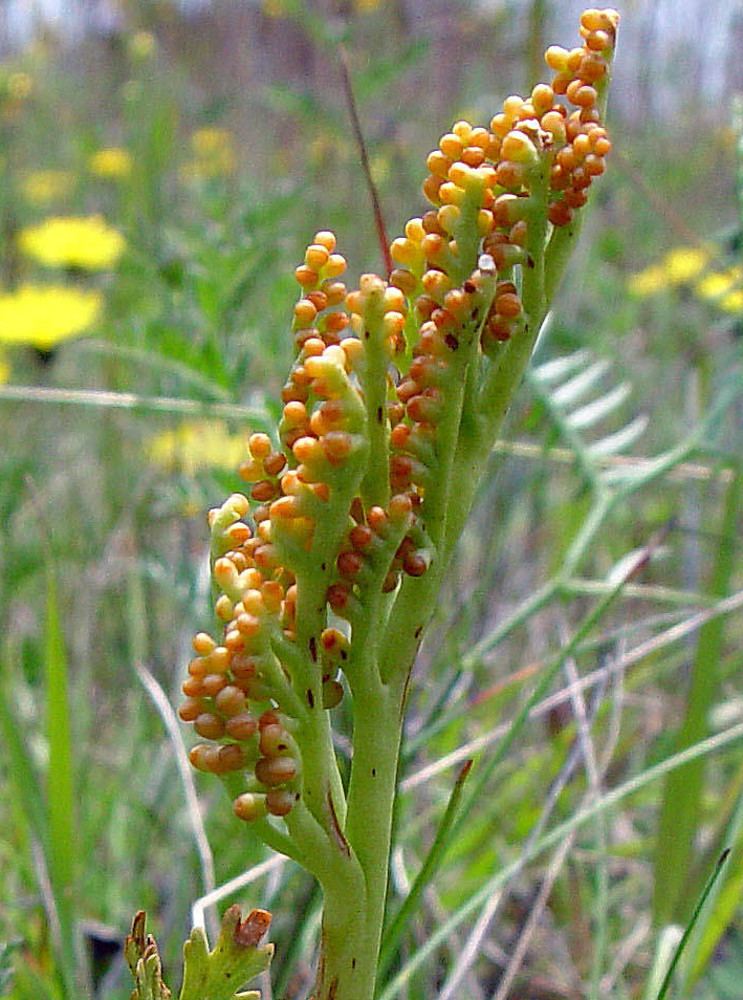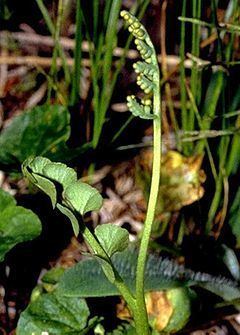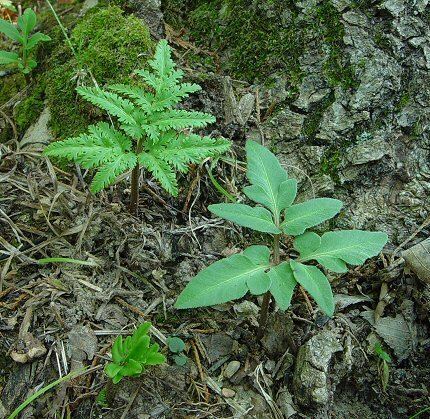Higher classification Ophioglossaceae | Division Pteridophyta Scientific name Botrychium Rank Genus | |
 | ||
Lower classifications Botrychium lunaria, Botrychium minganense, Botrychium ascendens, Botrychium crenulatum, Botrychium pinnatum | ||
Botrychium is a genus of ferns, seedless vascular plants. Botrychium Species are known as moonworts. They are small, with fleshy roots, and reproduce by spores shed into the air. One part of the leaf, the trophophore, is sterile and fernlike; the other, the sporophore, is fertile and carries the clusters of sporangia or spore cases. Some species only occasionally emerge above ground and gain most of their nourishment from an association with mycorrhizal fungi. They are unusual among Tracheophytes ("higher plants") in that at least some species produce the sugar trehalose.
Contents
- Tertiary ingredients of botrychium lunaria formulations pankaj oudhia s medicinal plant database
- Botrychium ss the moonworts
- Botrychium species placed in Botrypus
- Botrychium species placed in Sceptridium
- Conservation
- References

The circumscription of Botrychium is disputed between different authors; some botanists include the genera Botrypus and Sceptridium within Botrychium, while others treat them as distinct. The latter treatment is provisionally followed here.

Tertiary ingredients of botrychium lunaria formulations pankaj oudhia s medicinal plant database
Botrychium s.s., the moonworts


Botrychium species placed in Botrypus
The rattlesnake fern has traditionally been placed in the Botrychium subgenus Osmundopteris, the name of which is based on the species' superficial similarities to the Osmunda genus where it was previously placed.
= Botrypus virginianus (L.) Michx. 1803
Botrychium species placed in Sceptridium
These species (the evergreen grapeferns) have traditionally been placed in the Botrychium subgenus Sceptridium,a name based on the apparent similarity of their sporangia to "little scepters."
= Sceptridium subbifoliatum (Brack.) Lyon 1905
Conservation
Moonworts can be found in many environments, including prairies, forests, and mountains. While some Botrychium species are quite rare, conservation efforts can be difficult. Determining the rarity of a species is complicated by the plants’ small leaves, which stand only 2-10 centimeters above the soil. Even more of a challenge in obtaining an accurate population count is the genus’s largely subterranean life cycle. The vast majority of any one population of moonworts actually exists below ground in banks consisting of several types of propagules. One type of propagule is the ungerminated spores, which must percolate through the soil beyond the reach of light in order to germinate. This presumably increases the probability that the spore will be in range of a mycorrhizal symbiont before it produces the tiny, roughly heart-shaped gametophyte, which also exists entirely below ground. Finally, some species produce gemmae, a form of asexual propagation achieved by budding of the root.
Juvenile and dormant sporophytes can also be hidden in the soil for long periods of time. Mature sporophytes do not necessarily produce a leaf annually; they can remain viable underground for up to 10 years without putting up a photosynthetic component. This feat is made possible by their dependence on symbiotic partnership with AM fungi of the genus Glomus, which supply most fixed carbon for growth and reproduction.
This mycorrhizal dependence has also made lab cultivation of moonworts difficult. Thus far, only germination of the gametophyte has been successful.
